Richard Louis Proenneke was a self-taught naturalist, conservationist, writer, and wildlife photographer from the United States who lived alone in the cold wilderness of Alaska for 30 years.
In the mid-19th century, Henry David Thoreau wrote the classic work “Walden” after living alone in a wooden cabin at Walden Pond for two years. A century later, Richard Louis Proenneke, at the age of 51, decided to quit his job and rely on his perseverance and strong faith to live alone in the cold wilderness of Alaska for three decades. Today, the cabin he built has been listed in the National Register of Historic Places in the United States.
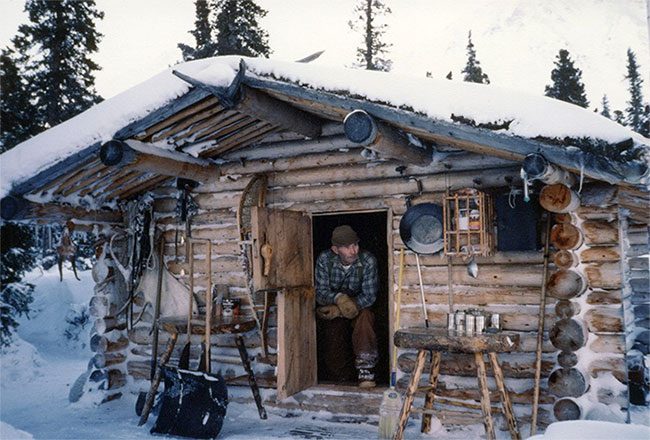
Richard Louis Proenneke lived alone in the cold wilderness of Alaska for 30 years. (Illustrative image).
Richard Louis Proenneke was born in Primrose, Iowa, on May 4, 1916. His father was a craftsman and his mother was an avid gardener. His love for nature was inspired by his mother. Influenced by the Great Depression during his childhood, Richard had to drop out of high school for two years and found work on a farm. This early experience shaped his extremely frugal philosophy of life.
During this time, Richard, like most teenagers of his era, yearned for an extraordinary life. In his free time after working on the farm, he would ride his Harley motorcycle through the woods. In 1941, he joined the United States Navy. In 1945, Richard contracted rheumatic fever while stationed in San Francisco, and after six months of treatment, he retired.
After the war, Richard held various jobs, from repairman to technician to farm operator. His rich life experiences laid the foundation for his later solitary life. Richard nearly lost his sight in a welding accident, and once again, he decided to retire early after fully recovering.
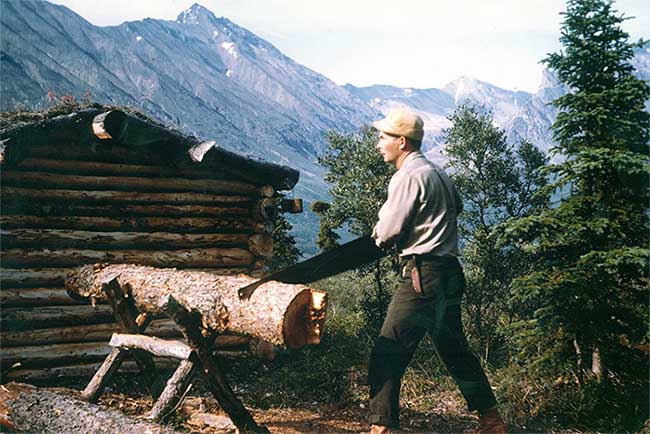
Richard decided to retire early after fully recovering. (Illustrative image).
In 1962, he visited Alaska to see old comrades, and at Clark Lake National Park, the pristine beauty moved Richard’s heart. In 1968, at the age of 52, with the help of his comrades, he found an ideal location by Twin Lakes—a glacial lake consisting of two interconnected lakes, surrounded by the rugged Nicola mountain range and a large area of broadleaf trees.
After finding a suitable spot, Richard used the surrounding trees to build a wooden cabin measuring about 20 square meters with his own hands as his dwelling.
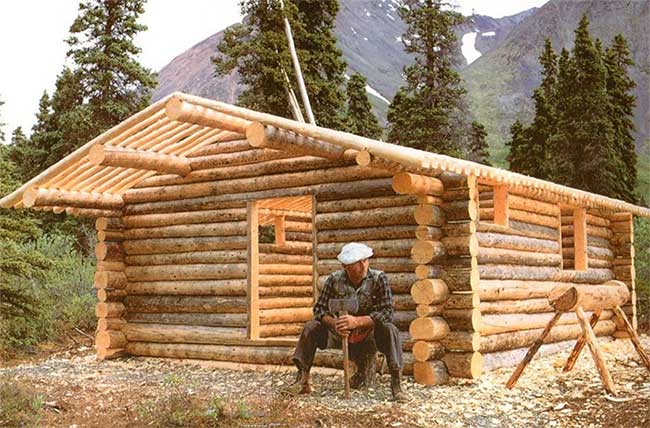
Richard used the surrounding trees to build a 20m2 cabin. (Illustrative image).
Living alone in the wilderness is a challenge for those without enough willpower. Moreover, the cabin, located on the south shore of the lake, received weak sunlight during the winter months. The cold nights and heavy snow could easily lead one to feel despondent and anxious.
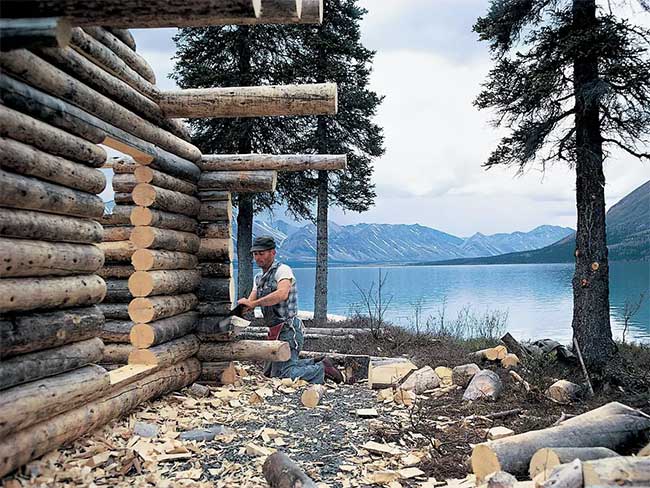
Richard seemed to truly enjoy this life. (Illustrative image).
However, Richard seemed to truly enjoy this life; for him, the new life in the wilderness was the realization of his childhood dream. Over 30 years of living alone, Richard wrote more than 250 journals. In one entry, he wrote, “I have found my own feelings in late spring, late summer, and early autumn, but what about winter? Cold, silent; do I want to be alone? I decided to find out.”
Besides journaling, Richard enjoyed capturing life with his 16mm film camera, documenting the process of building his cabin as well as the daily activities of local wildlife.
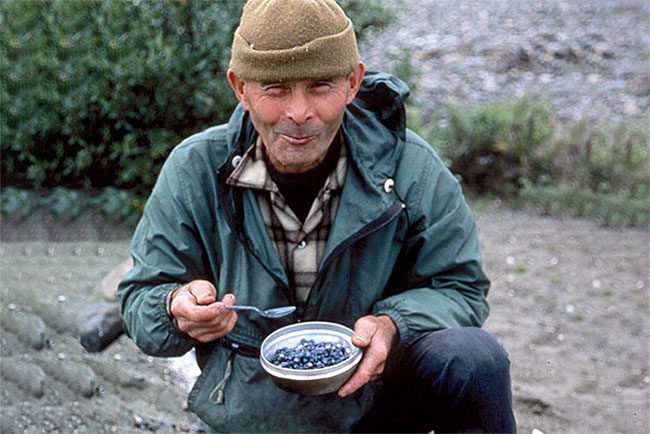
Living alone in the wilderness is a major challenge. (Illustrative image).
Allen Bennett, a wildlife and fisheries biologist at Clark Lake National Park, was a friend of Richard during his solitary years. After knowing Richard for many years, he wrote a book titled “Alone in the Wilderness.” The book states that Richard was mostly alone for five years at Twin Lakes in the late 1960s, relying on his resourcefulness and resilience to survive in the harsh winter environment.
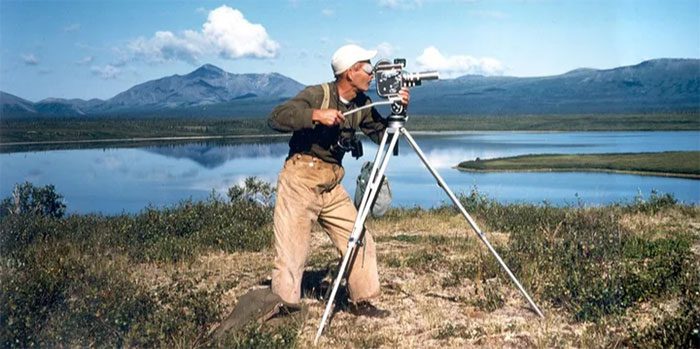
Richard enjoyed documenting life with his 16mm film camera. (Illustrative image).
Bennett also wrote that “idle” was not in Richard’s dictionary; he was always busy with various activities. As a diligent observer and journal keeper, Richard narrated his life without ever feeling lonely, dedicating most of his free time to writing about the weather, the environment, and animals. Richard walked thousands of miles each year and became familiar with the scenery around his cabin. To escape the loneliness in the valley, Richard frequently climbed mountains to enjoy the surrounding views.
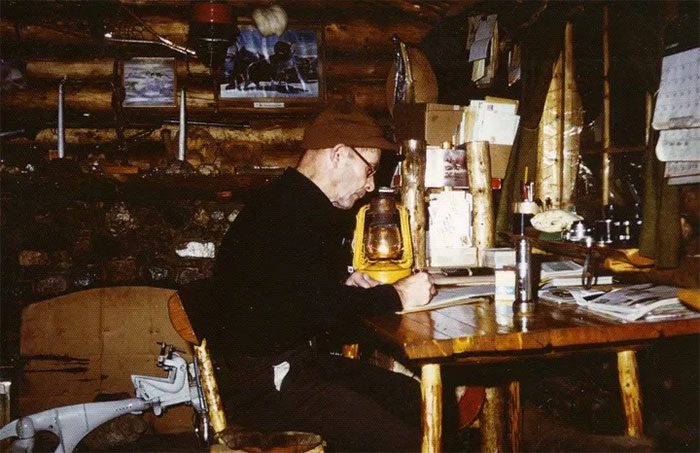
Richard narrated his life without ever feeling lonely. (Illustrative image).
Richard fished from the lake and hunted porcupines when they came close to his cabin. The frigid climate of Alaska acted like a natural refrigerator, eliminating worries about food spoilage in winter. To save food, Richard even built an outdoor food rack high above the ground. Of course, Richard was not a reclusive hermit; he happily replied to all who wrote to him and occasionally traveled to visit friends and family.
In 1973, a friend of Richard compiled his journals into a book titled “One Man’s Wilderness: An Alaskan Odyssey.” Video footage, photographs, and journals about his time living alone were also adapted into four documentaries, the first of which is called “The Lonely Ranger in the Wilderness,” documenting his daily life, woodcutting, hunting, and wandering in the mountains while living alone. There is also a documentary titled “Alaska for One,” showcasing his unique character in isolation, overcoming challenges, and living independently, apart from modern civilization.
Surviving for a long time in nature gave Richard a robust physique; at the age of 81, he could climb mountains faster than most young visitors. In 1999, Richard decided to return to California to live with his brother as he was too old to continue living alone, and he ultimately passed away in 2003. Before his death, he left his cabin at Twin Lakes as a gift to the National Park Service.
As time passed, due to the effects of global warming, the landscape of Clark Lake National Park underwent significant changes. Today, the temperatures at Twin Lakes have become relatively mild in winter, and the place where Richard lived alone has attracted many visitors. It has now become a temporary shelter for hikers and explorers.


















































